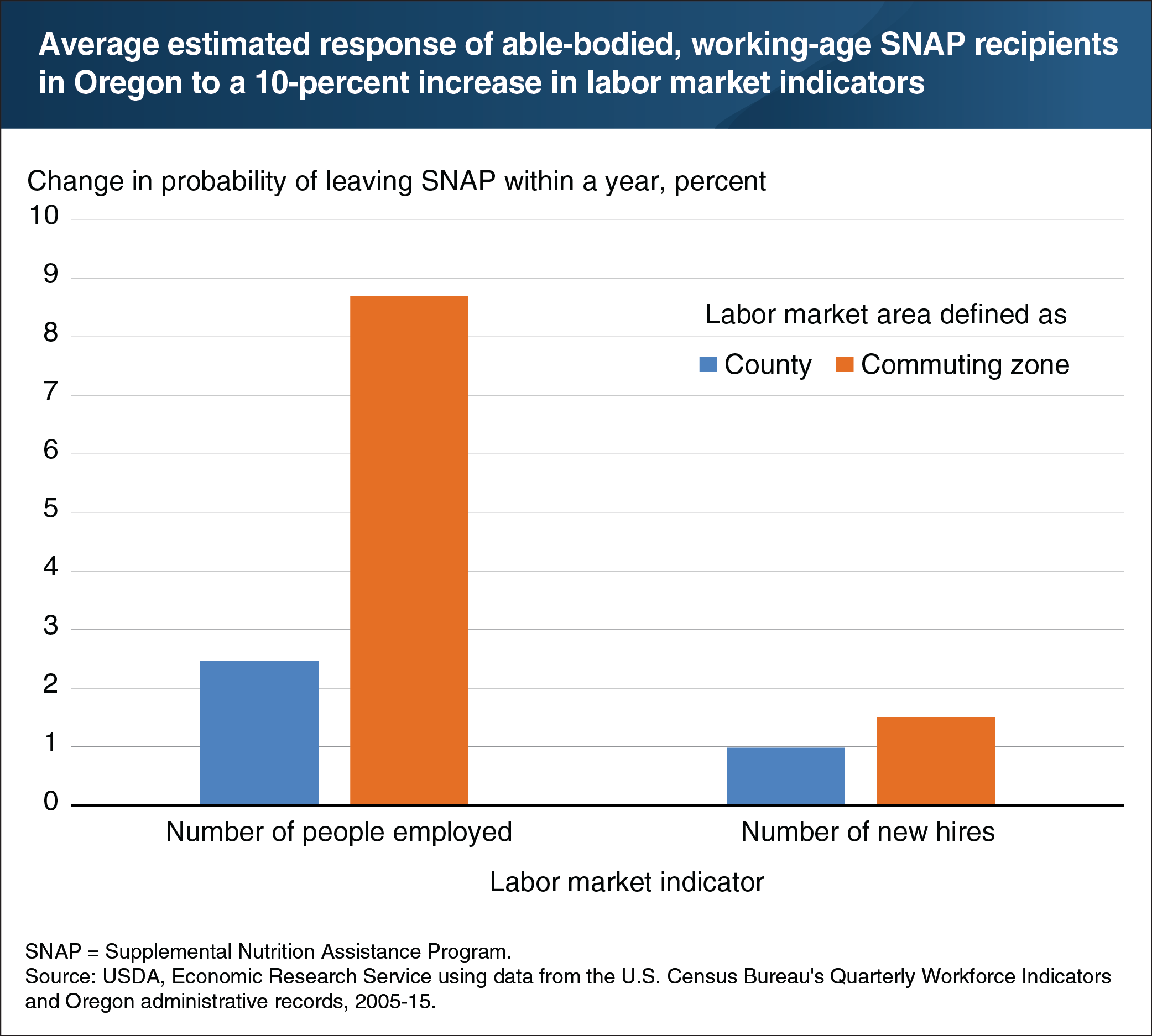How labor markets are defined matters when gauging SNAP participants’ response to economic conditions
- by Erik Scherpf
- 10/18/2018

A recent ERS study examined the responsiveness of participants in USDA’s Supplemental Nutrition Assistance Program (SNAP) to changes in local labor market conditions. The researchers used SNAP administrative records from Oregon to estimate the likelihood of nondisabled, or able-bodied, working-age people leaving SNAP as local labor market conditions improve. Favorable labor market conditions were more likely to lead to SNAP exits when labor market areas were defined as commuting zones, a definition that explicitly tries to capture areas where people live and work. In Oregon commuting zones, a 10-percent increase in the number of people employed was estimated to raise the likelihood that the average able-bodied, working-age (ages 25-59) SNAP participant left the program within a year by 8.7 percent, and a 10-percent increase in local new hires was estimated to raise the likelihood of leaving SNAP by 1.5 percent. Defining the local labor market area to coincide with Oregon counties, rather than commuting zones, resulted in smaller—but still positive—estimated effects. This chart appears in “Local Labor Market Conditions Impact Participation in USDA’s Supplemental Nutrition Assistance Program” in ERS’s Amber Waves magazine, September 2018.

